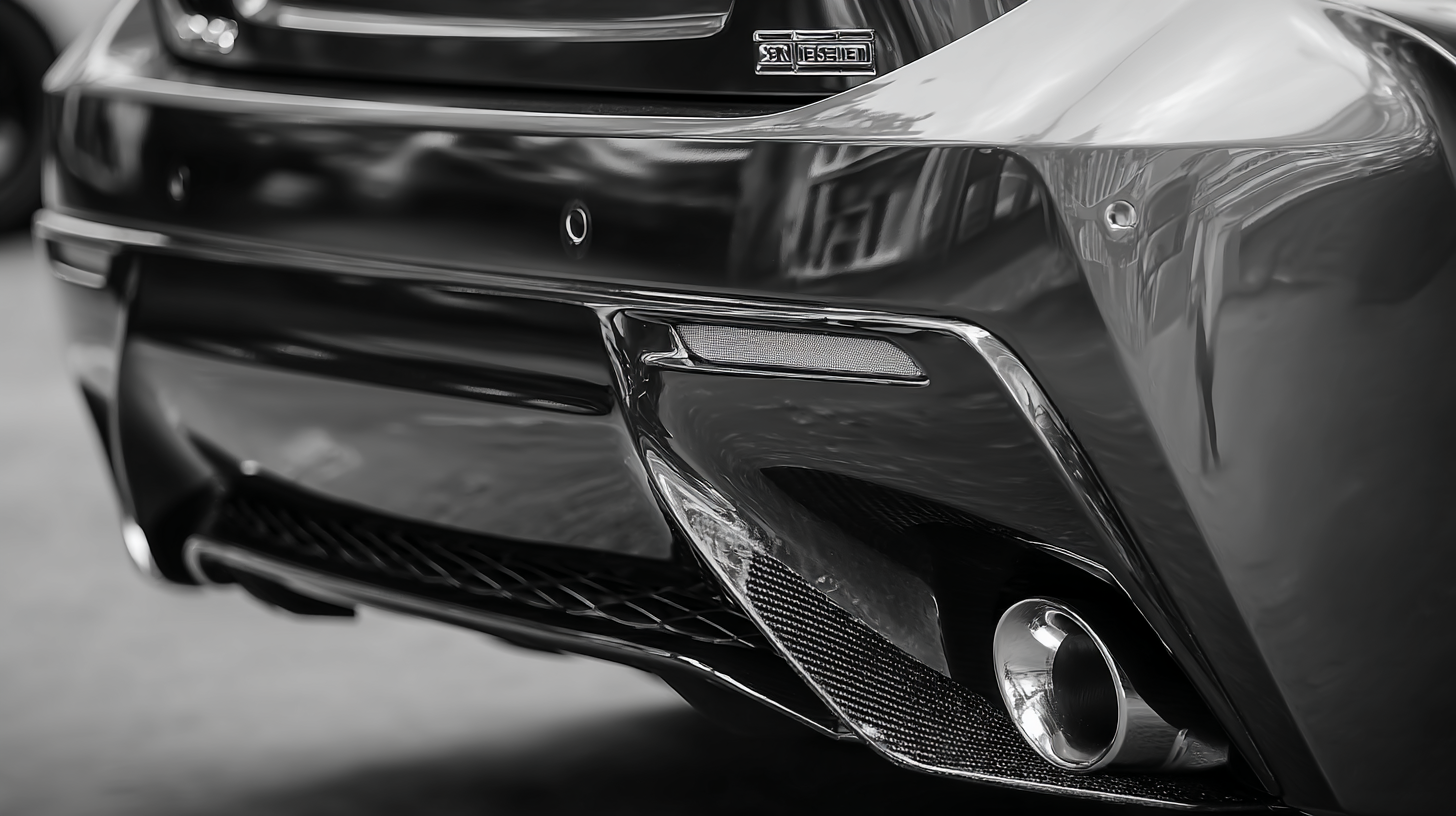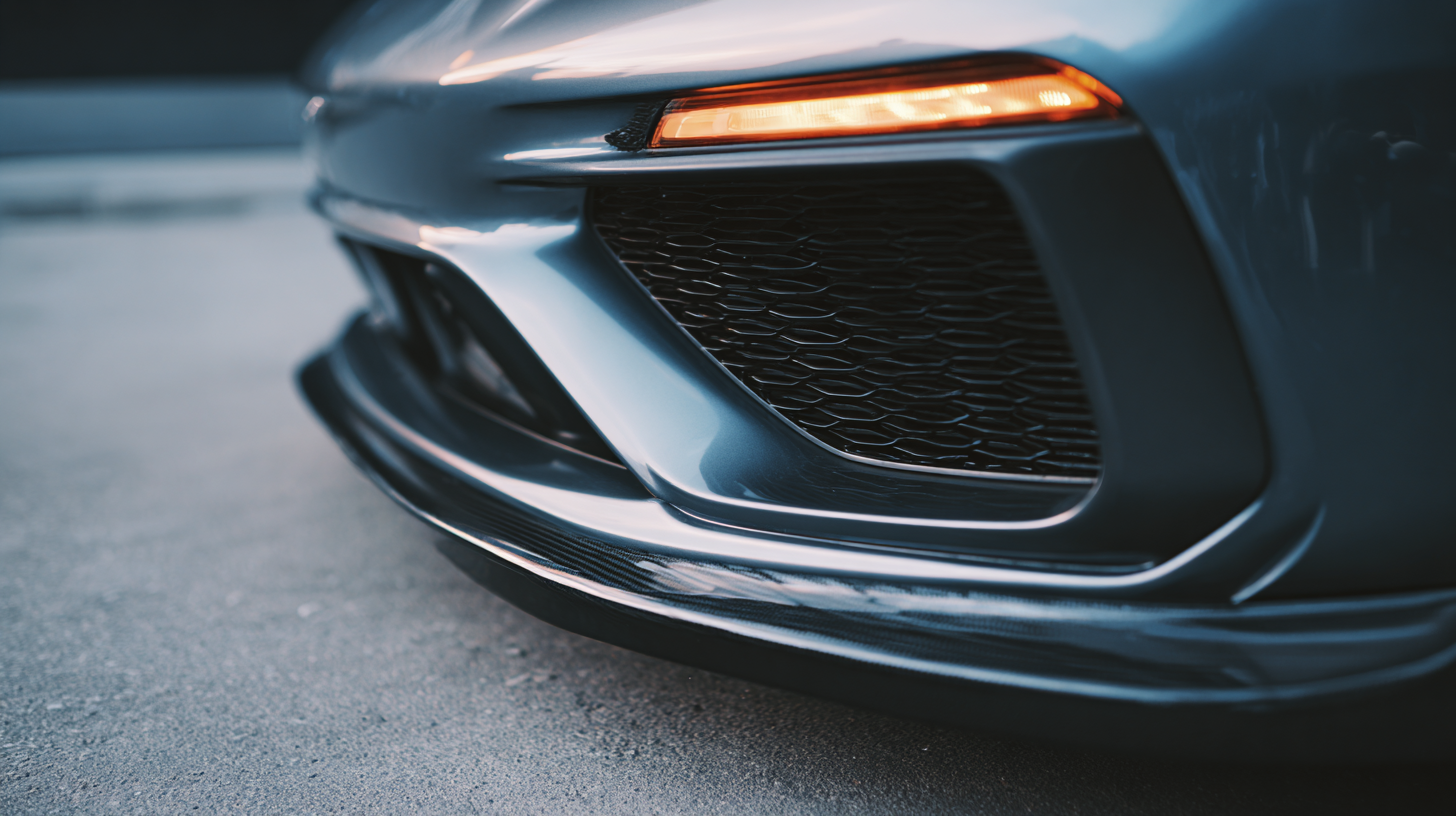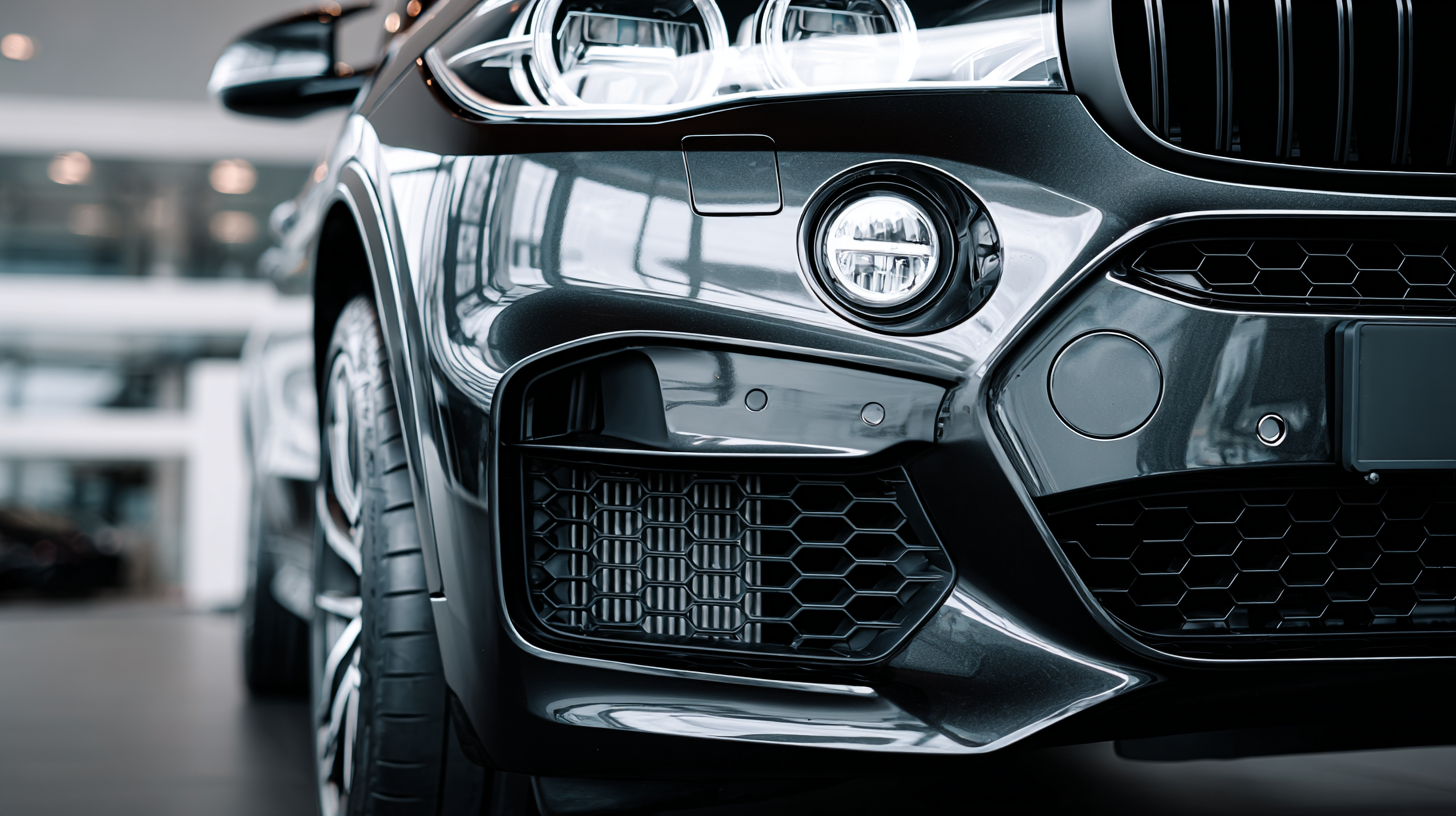
Top Innovations in Car Bumper Design: Examples that Define the Best
In the rapidly evolving automotive industry, car bumpers have transcended their traditional role of merely protecting vehicles in collisions. Today, car bumper design is at the forefront of innovation, integrating advanced materials, cutting-edge technology, and striking aesthetics. This has resulted in bumpers that not only enhance safety but also improve fuel efficiency and contribute to overall vehicle performance.

From the implementation of lightweight materials that reduce weight and enhance maneuverability to sophisticated sensors and cameras embedded for better driver assistance, the latest innovations showcase the best in automotive engineering. As we explore the top innovations in car bumper design, we'll highlight examples that exemplify these benefits, illustrating how these advancements are redefining expectations and setting new standards in the automotive world.
Key Features of Modern Car Bumpers: Crafting Safety and Aesthetics
In recent years, car bumpers have evolved significantly, balancing safety with aesthetic appeal. According to a report by the National Highway Traffic Safety Administration (NHTSA), well-designed bumpers can reduce the risk of injury during low-speed collisions by nearly 20%. Modern bumpers are increasingly constructed from advanced materials such as thermoplastics and composites, which not only enhance impact resistance but also contribute to a sleeker, more contemporary look. The integration of energy-absorbing structures and innovative design features ensures that these components fulfill their primary role—protecting passengers and pedestrians alike.
Moreover, manufacturers are prioritizing the incorporation of smart technology within bumper design. Features such as pedestrian detection systems and integrated sensors are becoming commonplace, enhancing overall vehicle safety. A study by the Insurance Institute for Highway Safety (IIHS) highlights that vehicles equipped with advanced driver-assistance systems, including those that use smart bumpers, have experienced a reduction in front-end collisions by up to 30%. As car bumpers continue to blend functionality with style, they represent not only an evolving safety standard but also a reflection of modern automotive design trends.

Innovative Materials in Bumper Design: Strength Meets Lightweight
In the realm of automotive design, the evolution of car bumpers is steering towards a future dominated by innovative materials that prioritize both strength and lightweight characteristics. Additive manufacturing (AM) of polymer-based composites has made tremendous strides, giving designers the tools to create structures that not only comply with safety standards but also enhance vehicle aesthetics and performance. By utilizing bio-inspired designs, such as those derived from the mechanical properties of cattails and bamboo, engineers are crafting bumpers that withstand impacts more effectively while minimizing weight.
One exciting development in this field is the adoption of carbon nanotube-polymer composites. These advanced materials offer superior strength-to-weight ratios, providing a significant boost to the performance of bumpers in crash scenarios. The integration of such composites through advanced manufacturing techniques not only enhances functionality but also aligns with the automotive industry's push for lighter vehicles.
Tips for Designers: Embracing nature as a blueprint for innovation can lead to ground-breaking designs. Consider using bio-inspired structures that mimic the resilience of natural materials. Additionally, investing in additive manufacturing can streamline production processes and afford greater design flexibility. Focus on creating lightweight components that do not compromise on safety features, ensuring your designs meet the rigorous demands of modern automotive engineering.
How Aerodynamics Influence Car Bumper Designs for Enhanced Performance
The design of car bumpers has evolved significantly, with aerodynamics playing a crucial role in enhancing vehicle performance. A well-designed bumper can reduce drag, improve fuel efficiency, and contribute to overall stability at high speeds. According to a study published by the Society of Automotive Engineers, vehicles with optimized aerodynamic bumpers can achieve fuel savings of up to 5% compared to standard designs. This is particularly vital as manufacturers aim to meet increasingly stringent fuel economy standards.
Incorporating aerodynamics into bumper design involves considerations such as shape, materials, and integration with the overall vehicle silhouette. Techniques like computational fluid dynamics (CFD) help engineers create bumpers that channel airflow effectively, minimizing turbulence. For instance, a recent report from J.D. Power highlighted that vehicles with active aerodynamic features, including adjustable bumpers, lead to a 10-15% improvement in performance metrics during real-world driving conditions. As the automotive industry continues to innovate, the marriage of aesthetics and functionality in bumper design will be a key factor in achieving both environmental goals and consumer satisfaction.
Smart Technology Integration in Bumper Innovations: Sensors and More
In recent years, the integration of smart technology into car bumper design has revolutionized automotive safety and functionality. Modern bumpers now feature advanced sensor systems that enhance collision detection and prevention. For instance, according to the 2023 Automotive Safety Report, vehicles equipped with multi-sensor bumper systems have shown a 30% reduction in low-speed collisions. These sensors can detect obstacles, provide real-time feedback to drivers, and even activate automated braking systems when necessary.
Another significant innovation involves the use of adaptive bumpers that communicate with surrounding vehicles and infrastructure. Research indicates that implementing vehicle-to-everything (V2X) communication can lead to a staggering 60% decrease in traffic accidents. This smart integration not only improves safety but also enhances the overall driving experience by providing critical information to drivers in real time.
**Tip 1:** When choosing a vehicle, look for models with advanced bumper technology. Features like adaptive sensors and V2X communication can significantly enhance your safety on the road.
**Tip 2:** Always ensure you maintain your bumper's sensors and cameras regularly; keeping them clean and functional is vital for optimal performance and safety.
**Tip 3:** Stay informed about updates or recalls related to the smart technology in your vehicle, as manufacturers frequently improve their systems for better safety.
Top Innovations in Car Bumper Design
| Innovation | Feature | Benefit | Technology |
|---|---|---|---|
| Adaptive Bumpers | Self-adjusting upon impact | Reduced damage costs | Smart sensors |
| Integrated Sensors | Collision detection | Enhanced safety | Ultrasonic sensors |
| Lightweight Materials | Carbon fiber and plastics | Improved fuel efficiency | Advanced composites |
| Active Aerodynamics | Adjustable air flow components | Optimized performance | Smart actuators |
| Impact Absorption Technology | Energy-dissipating structure | Increased passenger safety | Specialized foam materials |
Sustainable Practices in Bumper Manufacturing: Eco-Friendly Approaches
The automotive industry is undergoing a significant transformation, particularly in the area of bumper manufacturing, where sustainability has become a driving force. Recent research by the International Council on Clean Transportation (ICCT) indicates that the adoption of eco-friendly materials in vehicle parts can reduce overall carbon emissions by up to 25%. Bumpers, traditionally made from virgin plastics and metals, are now increasingly being produced using recycled materials. For instance, manufacturers are incorporating recycled thermoplastics, which not only minimize waste but also maintain performance standards, thereby challenging the notion that sustainability compromises quality.
Another innovative practice gaining traction is the integration of bio-based composites in bumper design. According to a report by the Society of Automotive Engineers (SAE), using bio-materials can enhance the recyclability of bumper systems and has the potential to lower the environmental impact by around 30% compared to conventional materials. Furthermore, several automotive companies have committed to achieving a circular economy in their production processes, thereby promoting the reuse and recycling of bumper components. As consumers increasingly prioritize sustainability, these innovations not only align with environmental goals but also meet the demand for modern design and durability, reshaping the future of automotive manufacturing.




